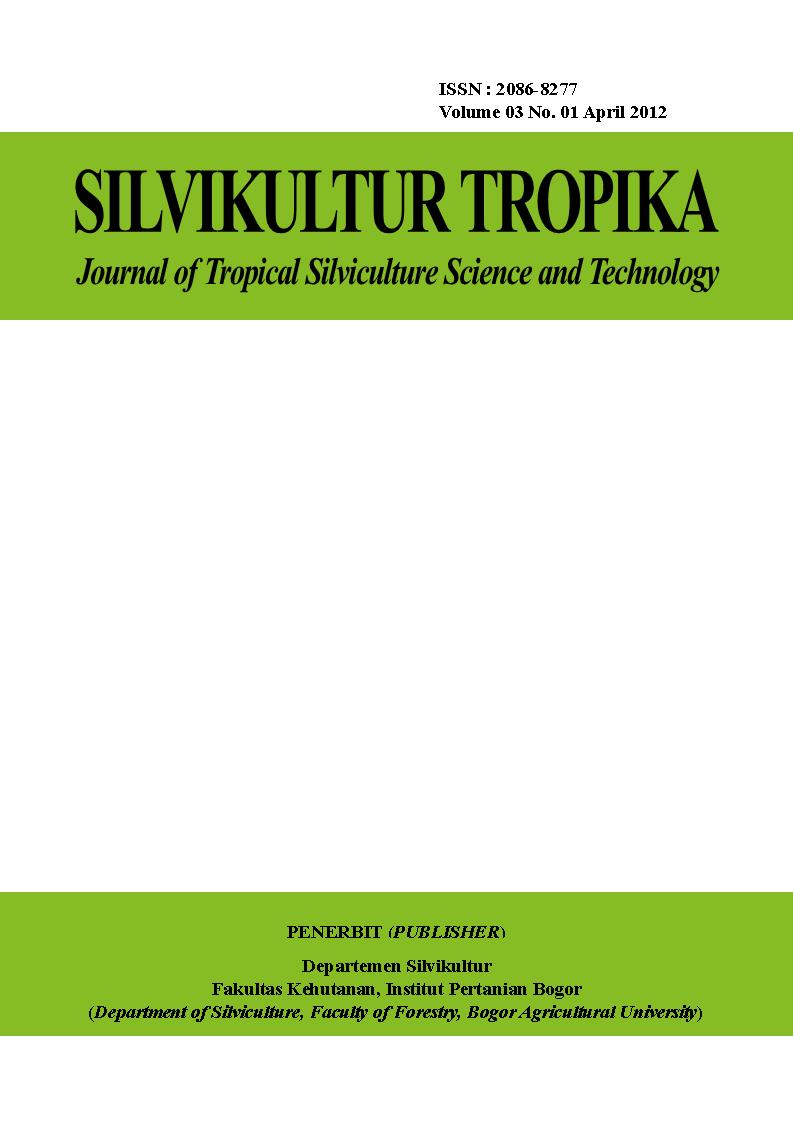Mekanisme Serangan Patogen Lodoh pada Semai Pinus (Pinus merkusii)
Abstract
Attack Mechanism of Damping-off Pathogens of Pinus merkusii Seedling
The study aims to determine the attack period of damping-off pathogen, i.e. F. oxysporum and R. solani, on P. merkusii, as well as studying the role of cellulolytic and pectolitic enzymes in the attack mechanism of both damping-off pathogens. Attack period determined by inoculated the two pathogenic fungi to seed or some age level of P. merkusii seedlings. Cellulolytic enzyme activity, represented by cellulase-C1, was determined by spectrophotometric techniques. Pectolitik enzyme activity, represented by polygalacturonase, determined by iodometric techniques and growth of the two pathogenic fungi in the medium containing pectin. The results showed that the attack period of damping-off pathogen, i.e. F. oxysporum and R. Solani, on P. merkusii seedling started from seed to 7-week old seedling, the 8-week old seedlings were free from damping-off. Both pathogens showed cellulase-C1 activity, and the enzyme activity in F. oxysporum is higher than that in R. solani. Iodometric technique could not detect the polygalacturonase activity of two fungal pathogens, presumably because P. merkusii stem seedling substrate which used in testing was too few. Nevertheless the two pathogenic fungi grew more intensively in medium containing pectin shown by higher mycelial dry weight than in media without pectin, and it shows the that the fungi capable to degrade pectin using pectolytic enzymes and use the
carbon produced for growth.










